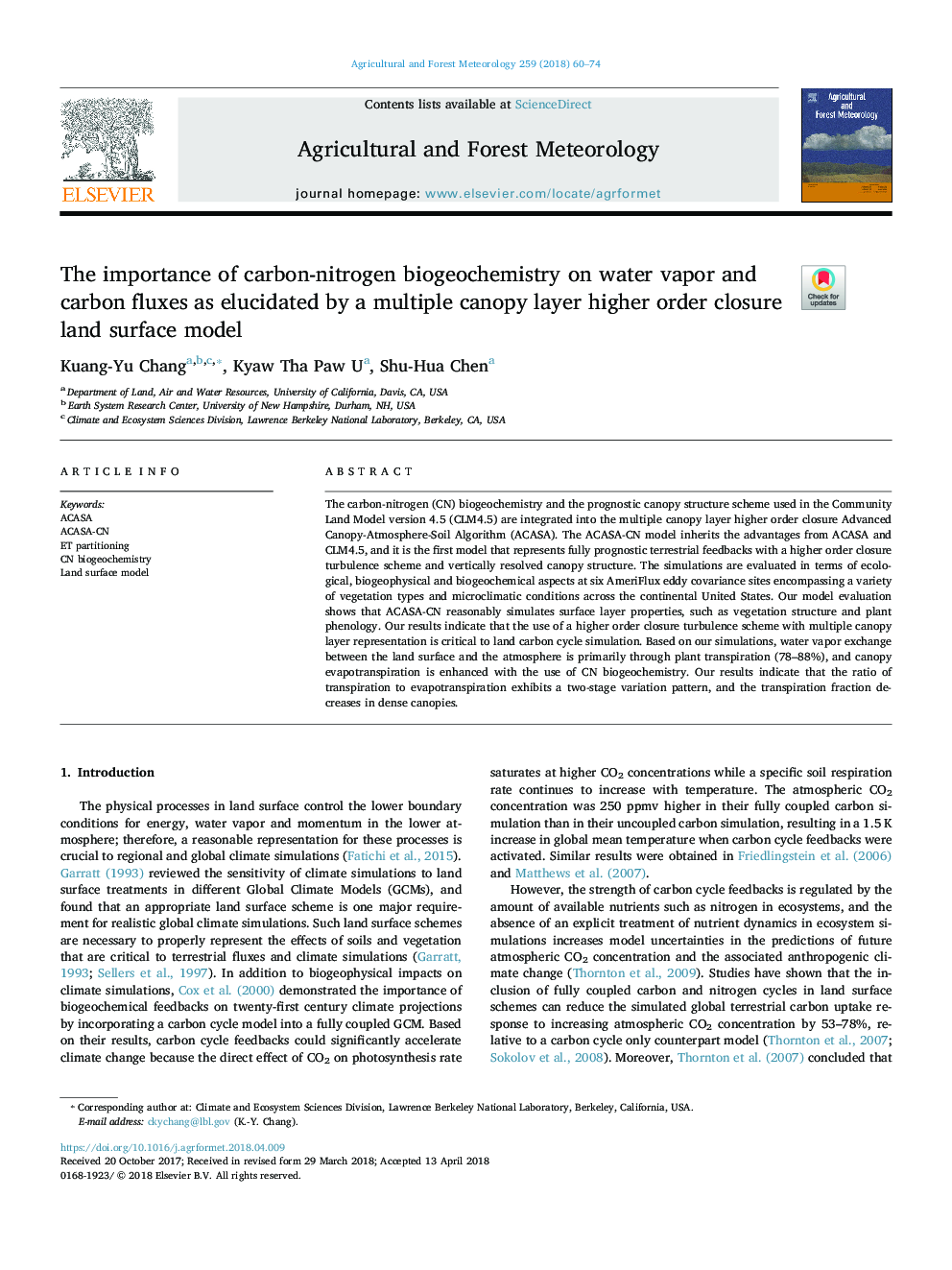| Article ID | Journal | Published Year | Pages | File Type |
|---|---|---|---|---|
| 6536631 | Agricultural and Forest Meteorology | 2018 | 15 Pages |
Abstract
The carbon-nitrogen (CN) biogeochemistry and the prognostic canopy structure scheme used in the Community Land Model version 4.5 (CLM4.5) are integrated into the multiple canopy layer higher order closure Advanced Canopy-Atmosphere-Soil Algorithm (ACASA). The ACASA-CN model inherits the advantages from ACASA and CLM4.5, and it is the first model that represents fully prognostic terrestrial feedbacks with a higher order closure turbulence scheme and vertically resolved canopy structure. The simulations are evaluated in terms of ecological, biogeophysical and biogeochemical aspects at six AmeriFlux eddy covariance sites encompassing a variety of vegetation types and microclimatic conditions across the continental United States. Our model evaluation shows that ACASA-CN reasonably simulates surface layer properties, such as vegetation structure and plant phenology. Our results indicate that the use of a higher order closure turbulence scheme with multiple canopy layer representation is critical to land carbon cycle simulation. Based on our simulations, water vapor exchange between the land surface and the atmosphere is primarily through plant transpiration (78-88%), and canopy evapotranspiration is enhanced with the use of CN biogeochemistry. Our results indicate that the ratio of transpiration to evapotranspiration exhibits a two-stage variation pattern, and the transpiration fraction decreases in dense canopies.
Keywords
Related Topics
Physical Sciences and Engineering
Earth and Planetary Sciences
Atmospheric Science
Authors
Kuang-Yu Chang, Kyaw Tha Paw U, Shu-Hua Chen,
